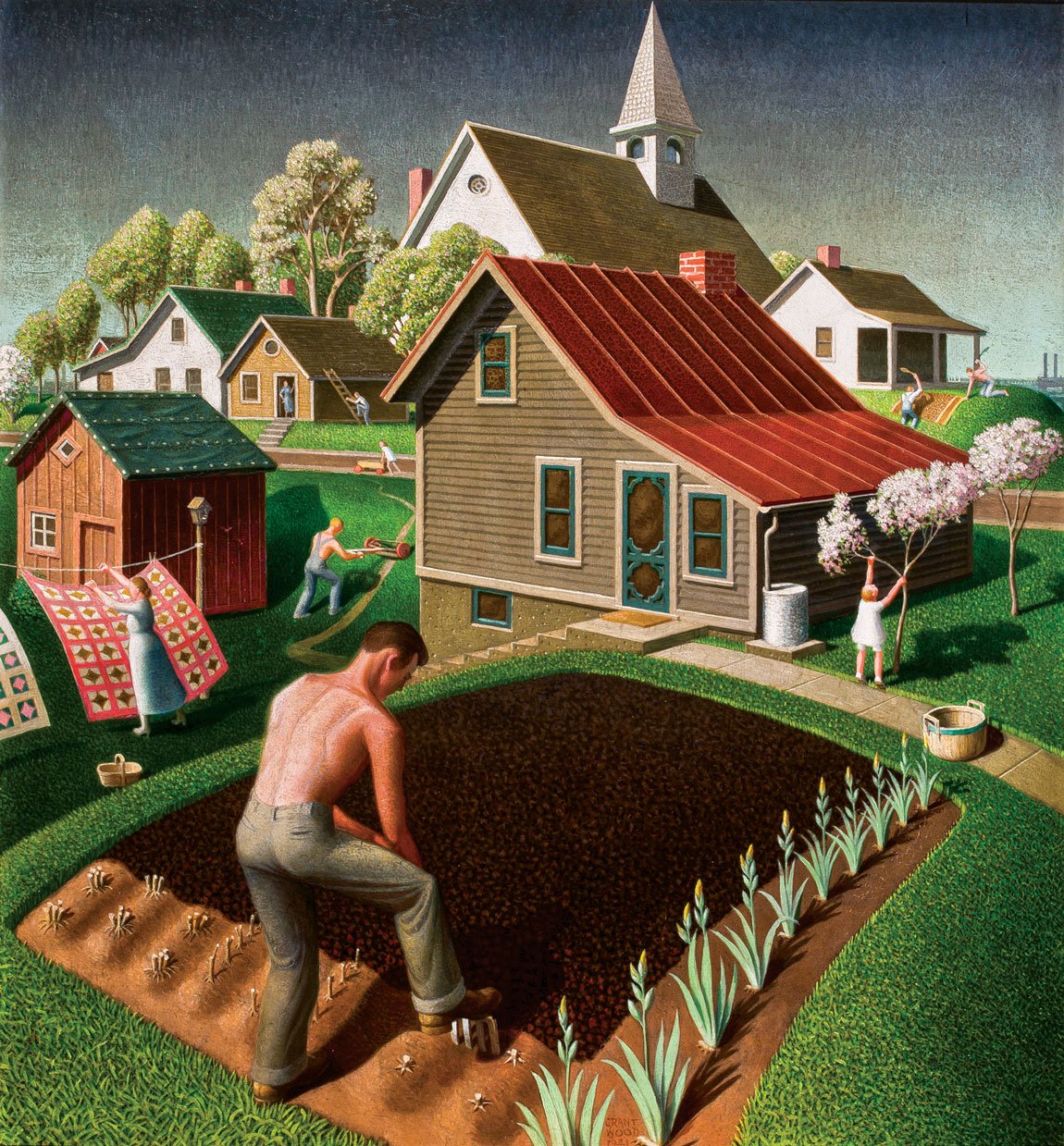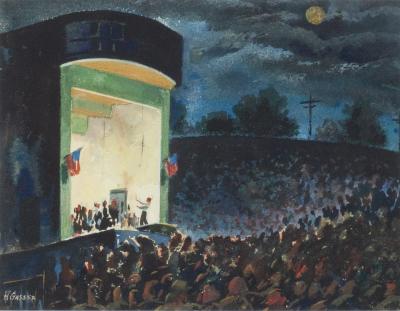Grant Wood: American Gothic and Other Fables
 | |
| Grant Wood, Spring in Town, 1941. Oil on wood, 26 x 24½ in. Swope Art Museum, Terre Haute, Indiana (1941.30). © Figge Art Museum, successors to the Estate of Nan Wood Graham/Licensed by VAGA, New York, NY. |
March 2–June 10, 2018
Whitney Museum of American Art
99 Gansevoort Street, NYC
For information call 212.570.3600 or visit www.whitney.org
Grant Wood’s American Gothic—the double portrait of a pitchfork-wielding farmer and a woman commonly presumed to be his wife—is perhaps the most recognizable painting in 20th century American art. But Wood’s career consists of far more than one single painting. The exhibition Grant Wood: American Gothic and Other Fables brings together the full range of his art, from his early Arts and Crafts decorative objects and Impressionist oils through his mature paintings, murals, and book illustrations. What the exhibition reveals is a complex, sophisticated artist whose image as a farmer-painter was as mythical as the fables he depicted in his art.
Wood sought pictorially to fashion a world of harmony and prosperity that would answer America’s need for reassurance at a time of economic and social upheaval occasioned by the Depression. Yet underneath its bucolic exterior, his art reflects the anxiety of being an artist and a closeted gay man in the Midwest in the 1930s. By depicting his subconscious anxieties through populist images of rural America, Wood crafted images that speak both to American identity and to the estrangement and isolation of modern life.
This Highlight was originally published in the 18th Anniversary issue of Antiques & Fine Art magazine, a fully digitized issue of which is published on www.afamag.com. AFA is affiliated with Incollect.































